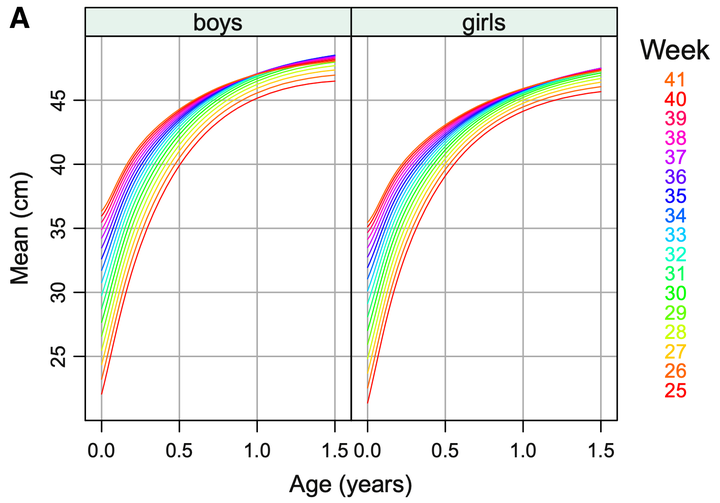Growth of preterm and full-term children aged 0-4 years: Integrating median growth and variability in growth charts

Abstract
Objectives: To assess the distribution of height, weight, and head circumference (HC) in preterm infants for ages 0-4 years, by gestational age (GA) and sex, and to construct growth reference charts for preterm-born children, again by GA and sex, for monitoring growth in clinical practice. Study design: The community-based cohort study covered a quarter of The Netherlands. 1690 preterm infants (GA, 25-35+6 weeks) and a random sample of 634 full-term control infants (GA 38-41+6), who were followed from birth to 4 years of age. Height, weight, and HC were regularly assessed during routine well-child visits and data were retrospectively collected. Results: At all ages, the median height and weight of preterm children were lower compared with full-term children. Growth depended on the child’s GA. Increase in HC showed an early catch-up and was similar to full-term children by the age of 1. Height, weight, and HC were more variable in boys, particularly in the very preterm children. Conclusions: At 0 to 4 years, the growth of preterm children differed from that of full-term children and depended on their GA. The greater variability of growth in boys suggests that they are more vulnerable to the complications of preterm birth that influence growth. These growth charts are the most precise tools currently available for monitoring growth in preterm children.